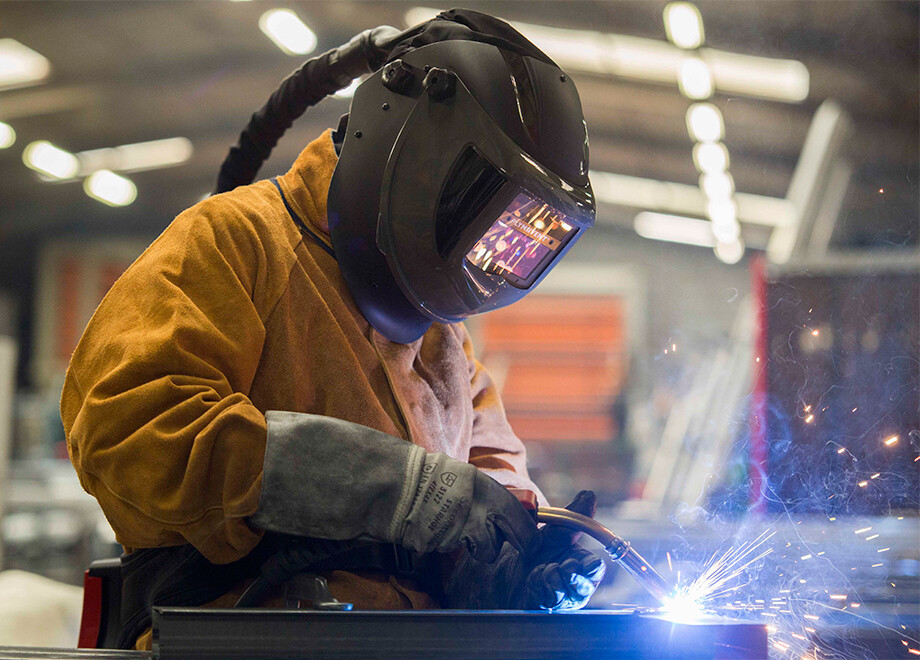
To the unacquainted, welding is akin to artistry with sparks and metal, fusing pieces together to give birth to an entirely new creation. But beneath the striking veneer of the welding process lies a world rife with hazards. From the blinding ultraviolet radiation to the risk of burns, electric shocks, and harmful fumes, safety in a welding environment is paramount. This article is a comprehensive guide to ensure safety in welding and workshop environments, lending credence to the adage that prevention is better than cure.
- Eye Protection and Safety Wear
- Electrical Safety and Fire Prevention
- Fume Control and Handling Hazards
Let’s spark this journey to safer welding practices!
Eye Protection and Safety Wear
Our first and foremost line of defense against welding-related hazards is personal protective equipment (PPE). They may seem like trivial gear to the untrained eye, but PPE plays an indispensable role in mitigating the risk of accidents and injuries.
One of the cardinal rules in any welding activity is to safeguard your eyes from the hazardous welding light. A full welding hood or helmet is the perfect shield against these threats. Visit bthsales.ca for affordable helmets. The shade of the helmet should be adjusted based on the process and amperage being used, as different shades offer varying levels of protection. Moreover, safety glasses should always be adorned, especially when cutting. Further, goggles or darker glasses can be employed when wielding the oxyacetylene torch.
Moving further, gloves hold paramount importance as they protect the hands from debilitating burns. For TIG welding, thinner gloves are befitting, while MIG and stick welding call for thicker gloves. Heat shields can be a surprising addition for delivering extra protection.
No welder’s wardrobe would be complete without a welding jacket made of flame-retardant fabric or leather. Get an affordable jacket from bthsales.ca. This critical piece of clothing helps protect against spatter and radiation from the welding arc. Sleeves and leg covers can further enhance protection. Pairing this with full-coverage heat-resistant shoes ensures protection from burns stemming from hot metal.
Considering the complexity that accompanies welding activities, hearing protection is a non-negotiable necessity. Ear muffs, or even disposable foam ear plugs, should be seen as indispensable as your welding rod!
Electrical Safety and Fire Prevention
The world of welding intertwines intricately with electricity. Precautions against electric shock play a critical part in maintaining welding safety. Keeping the environment clean and tidy also maintains safety. You can hire cleaning services like Express Hoods, to get the job done for you. Ensuring that all cables are insulated is a good starting point. It is strongly advised to refrain from welding in damp or wet conditions as these increase the risk of electric shocks. Stick welding demands extra caution as the electrode is always live.
Besides protecting oneself from electrical hazards, creating an environment immune to fire outbreaks is crucial in a workshop. Fires and explosions can be prevented by keeping work areas clean and free of flammable materials like sawdust and rags soaked in solvents. When working with fuel tanks and electrical services, it is advised that welders exercise extreme caution.
Rent a resort with Orlando Resorts Rental for any event, and make the event an epic experience.
Fume Control and Handling Hazards
Every welding process generates fumes and gases. These may cause health hazards in the long run, if not dealt with appropriately. Proper fume control is an essential part of maintaining a safe welding environment. Welders should position themselves away from the fumes and consider using a fume extractor or a small desk fan. For those who are exposed to higher levels of fumes, wearing a respirator could significantly decrease the risks.
Moving onto gas cylinders – vigorous checks are needed to ensure that they are properly secured. In addition, it is crucial to check that their safety caps are installed to prevent accidents. Handling these cylinders with gloves is another golden rule, as sharp edges on metal pieces can cause severe cuts.
One should also be mindful of clothing and accessories during working hours. Loose clothing and jewelry can easily cause accidents if they get caught in rotating machinery. Precautions are not limited to what we wear. They extend as far as how we handle various tools and machinery. For instance, when using angle grinders, appropriate wheel selection, usage of guards, eye protection, and proper lifting techniques can significantly reduce potential risks.
Beyond personal safety, another aspect to be mindful of is the safety of the end products. Always ensure that adequate skills and knowledge are at hand to guarantee the integrity and quality of the work. Some materials may not be suitable for welding. Therefore, meticulously researching all material properties is integral to a successful welding project.
By now, the complexity of ensuring safety in welding and workshop environments should be evident. Let the precautions outlined in this guide marinate in your practices, and embark on a journey that pays tribute not just to the art of welding, but also to the virtue of safety. After all, it’s your safety that sparks great creations!








